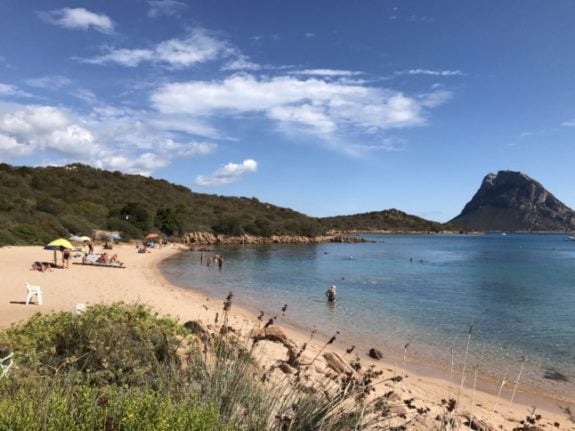The most recent sighting of the deadly arachnid was made on Sunday, 50 km from Cagliari, near the town of San Gavino Monreale on a farm owned by brothers Luca and Marco Sanna, the news agency Adnkronos reported.
Marco saw the spider and immediately recognized it as a black widow thanks to the 13 distinctive red marks present on its abdomen.
Shocked to come across a black widow, which have not been seen on the island for decades, he trapped it in a glass jar and called the local forest ranger.
But the sighting was no one-off: it seems the Mediterranean black widow population has undergone a revival in Sardinia.
On 22nd of November, a sighting of another black widow was confirmed in Cortoghiana, just weeks after another was spotted in Uta.
The news has been welcomed as a victory for biodiversity by biologists, but has given ordinary Sardinians cause to shake out their shoes each morning before putting them on.
The Mediterranean black widow measures between seven and 15mm and is one of the most poisonous of all the 33 types of widow spider. The venom of the larger females has been known to kill adult camels.
When a Mediterranean black widow bites a human being, symptoms do not occur immediately but manifest themselves one-to-three hours later. Symptoms include fever, nausea, vomiting, migraines and stomach cramps.
The poison also causes partial paralysis of the diaphragm and can create cardiac complications, which are sometimes deadly in the elderly and very young.
Though one hasn't been seen on the island for decades, the arachnid's presence plays a role in Sardinian folklore.
In Sardinia, the spider is known as 'Argiaì and its bite was thought to cause demonic possession, the only cure for which was by performing the dance of the Argia ('su ballu de s'arzia').
During the dance, the victim is buried neck-deep in a pit of manure and 21 women are called to dance around them. The women are divided into three categories – single, married and widows.
Each group takes it in turns to make the victim laugh, and if they succeed the patient is said to be on the road to recovery.
The dance of the Argia has not been performed since the 1970s, but the ritual was documented by Italian ethnographist Clara Gallini during a series of interviews she undertook with elderly Sardinians in 1988.
There are four documented cases of people being killed by the bite of the Mediterranean widow in Italy – two of which were in the north-eastern province of Liguria.



 Please whitelist us to continue reading.
Please whitelist us to continue reading.
Member comments